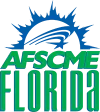Workplace Preparedness and COVID-19 Response

Questions for Your Employer:
Workers could be absent because they are sick; are in quarantine either on the order of a public official or on the recommendation of public health authorities or a doctor; are caregivers for sick family members; are caregivers for children if schools or day care centers are closed; have at-risk people at home, such as immunocompromised family members; or are afraid to come to work because of fear of possible exposure. What type of leave currently is available to employees in these scenarios? Given the extraordinary circumstances we are facing, what additional steps are you willing to take to ensure that employees can take leave in these situations and continue to be paid?
Infectious Disease Preparedness and Response Plan
Does a workplace-specific infectious disease preparedness and response plan that can help guide protective actions against COVID-19 exist in our workplace? Can you share the plan with the union? If one does not exist, what is the timeline for completion? Will the union be invited to collaborate on the preparedness and response plan?
Basic Infection Prevention Measures
A whole workplace approach emphasizing basic infection prevention measures could be easily promoted. What is your plan to implement good hygiene and infection control practices? These include promoting hand-washing, encouraging workers to stay home when sick, respiratory etiquette, providing clients and the public with tissues and trash receptacles, implementing or expanding telecommuting or staggered work hours, discouraging workers from sharing equipment and telephones and maintaining regular housekeeping practices, including routine cleaning and disinfecting of surfaces, equipment and other elements of the work environment.
Isolation of Sick People, if Appropriate
Prompt identification and isolation of potentially infectious individuals is a critical step in protecting workers, customers, visitors and others at a worksite or during transportation operations. What are the policies and procedures for workers to report when they are sick or experiencing symptoms of COVID-19? What are the policies and procedures for immediately isolating people who have signs or symptoms of COVID-19 in a facility or during transportation? Will staff provide a face mask if available, and ask the person to wear it? How do you plan to protect workers in close contact with (i.e., within 6 feet of) a sick person or who have prolonged or repeated contact with such a person?
Workplace Controls
The best way to control COVID-19 is to systematically remove it from the workplace, rather than relying on workers to reduce their exposure. When it may not be possible to eliminate the hazard, the most effective protection measures are (listed from most effective to least effective): engineering controls, administrative controls, safe work practices (a type of administrative control), and PPE. In most cases, a combination of control measures will be necessary to protect workers from exposure to COVID-19 and other infectious disease. What controls have you implemented in our workplace? Can you provide detailed information for each control?
